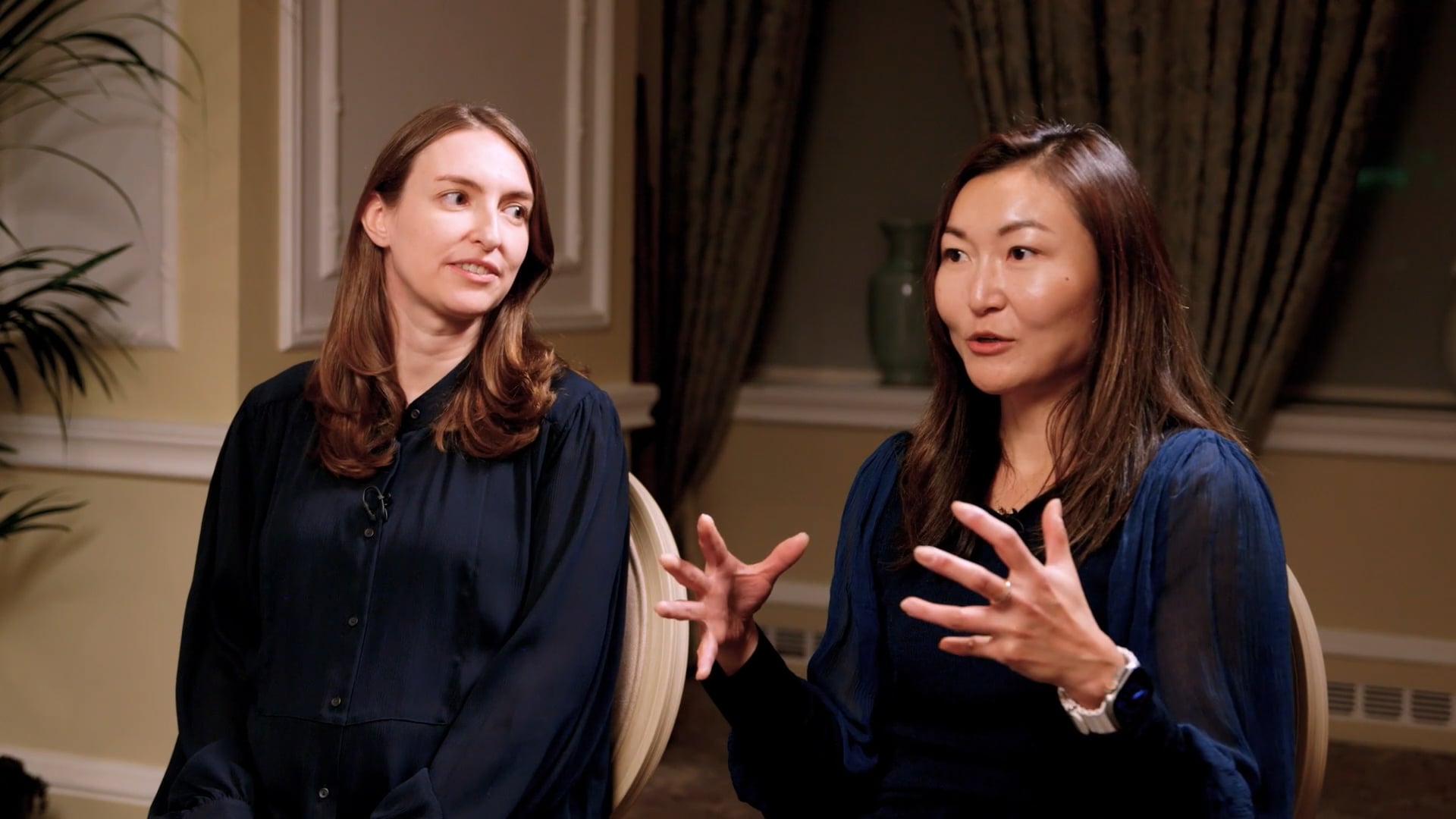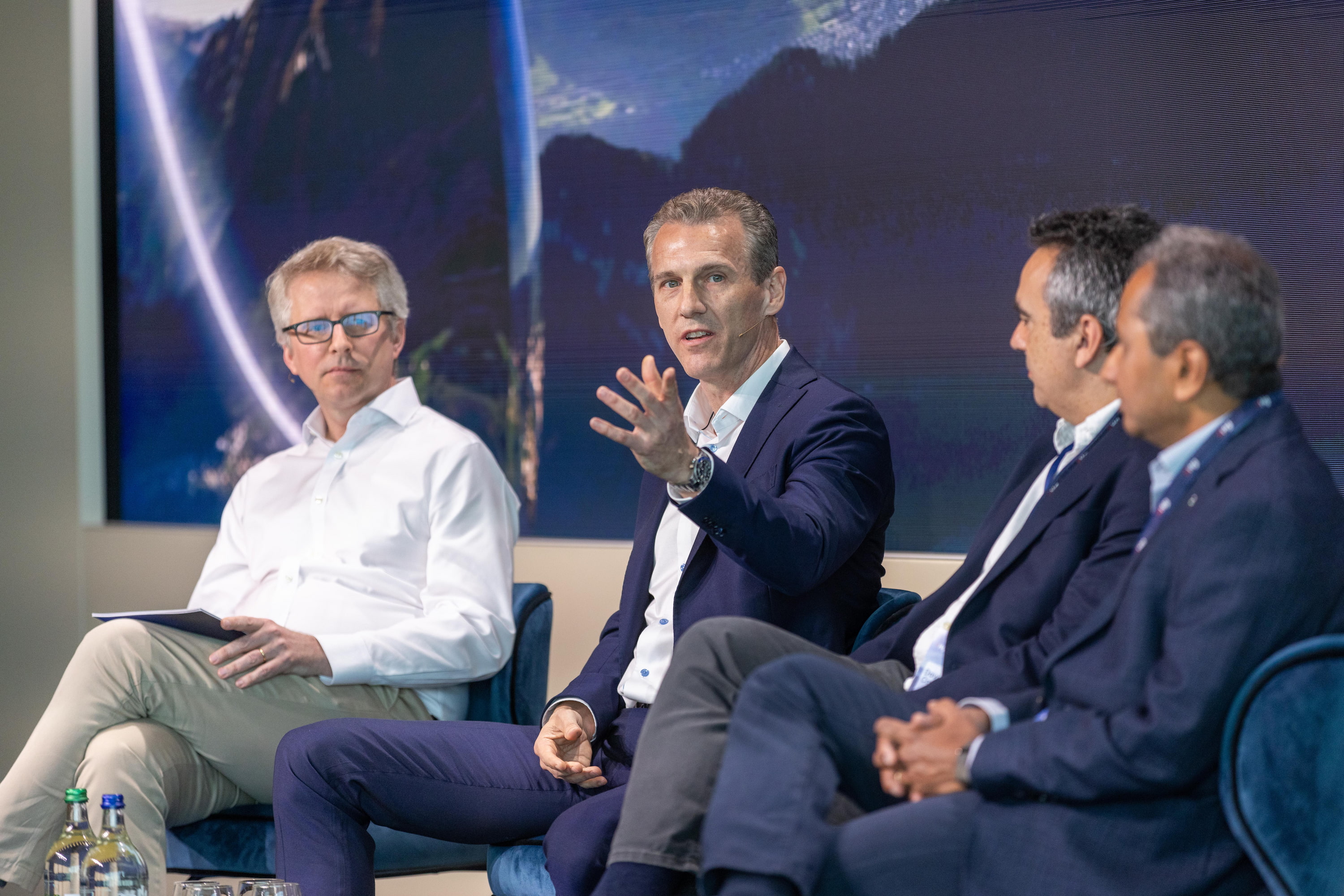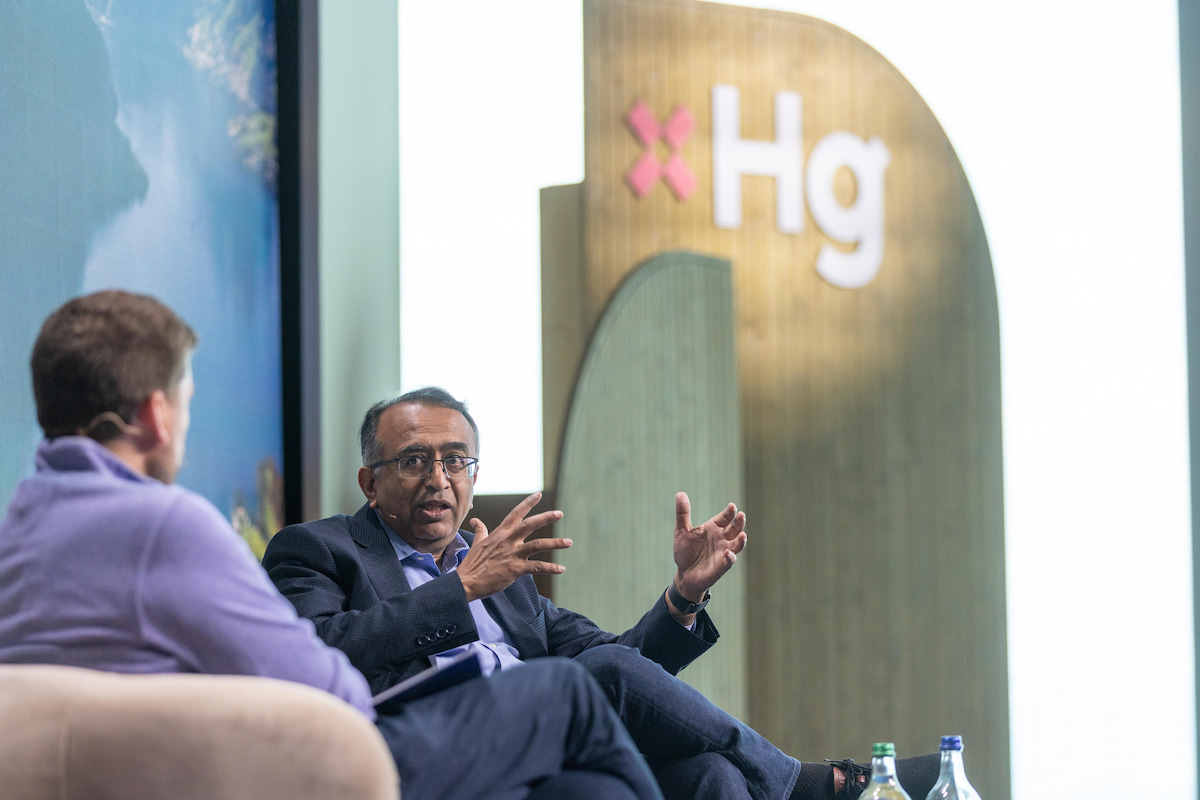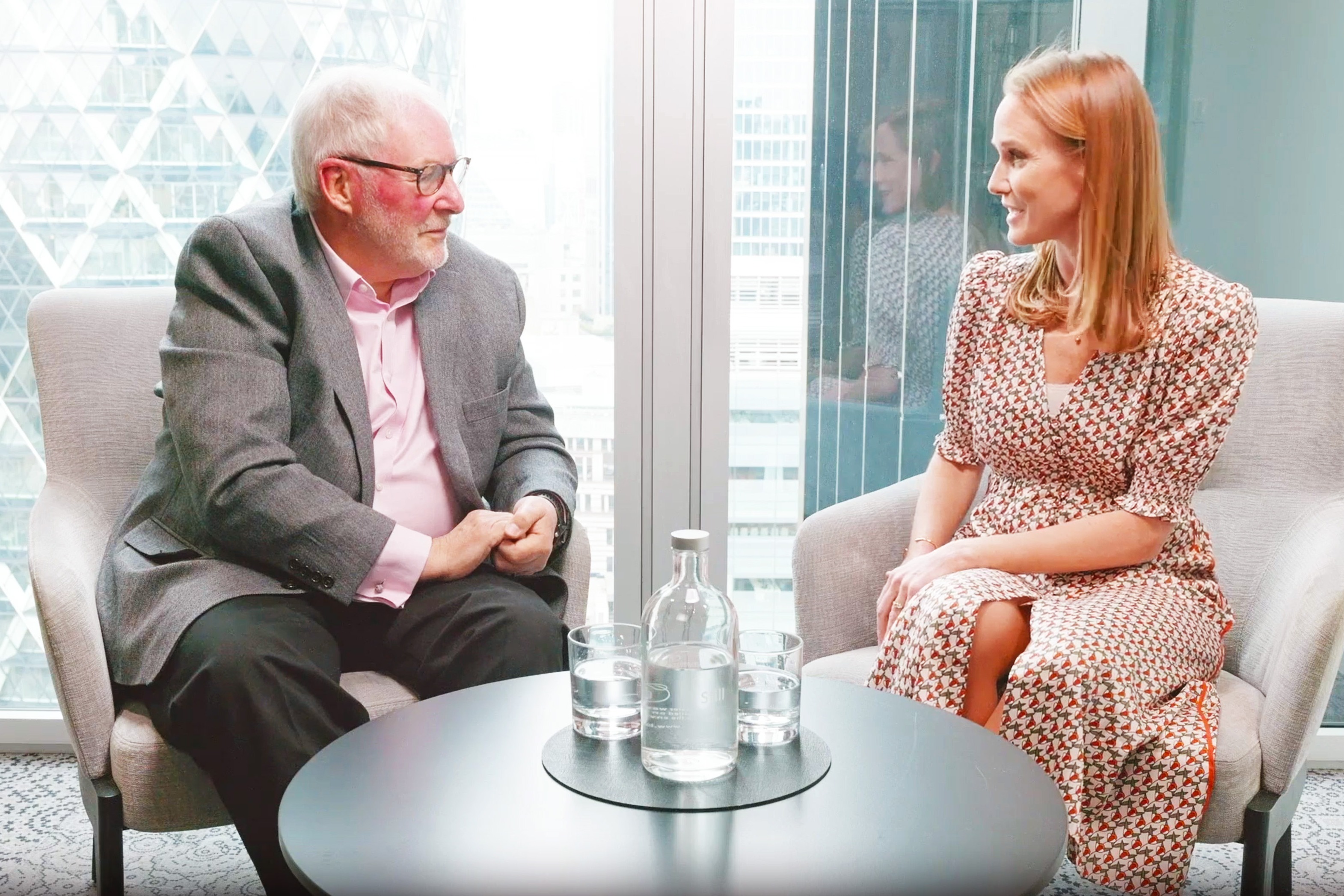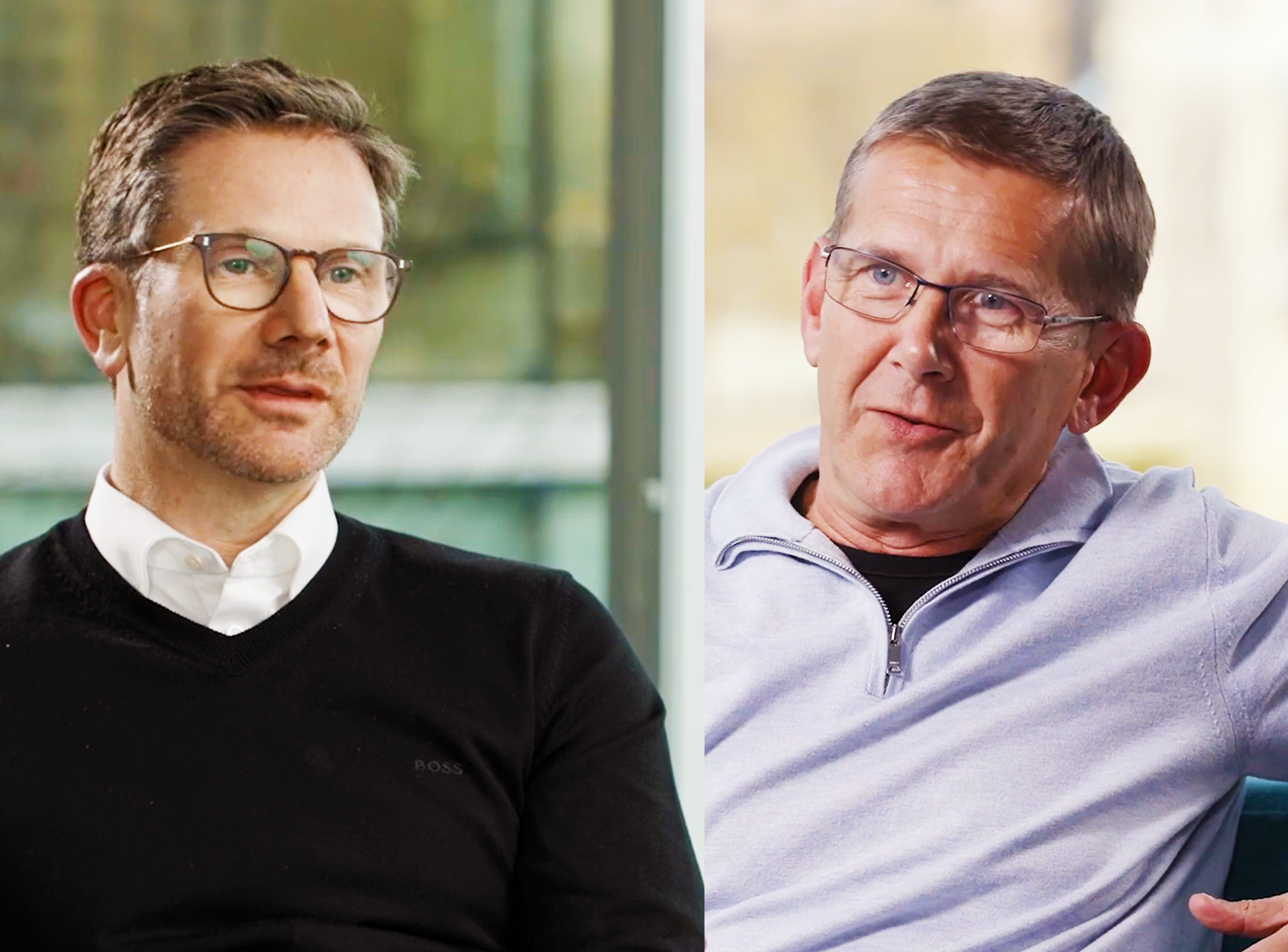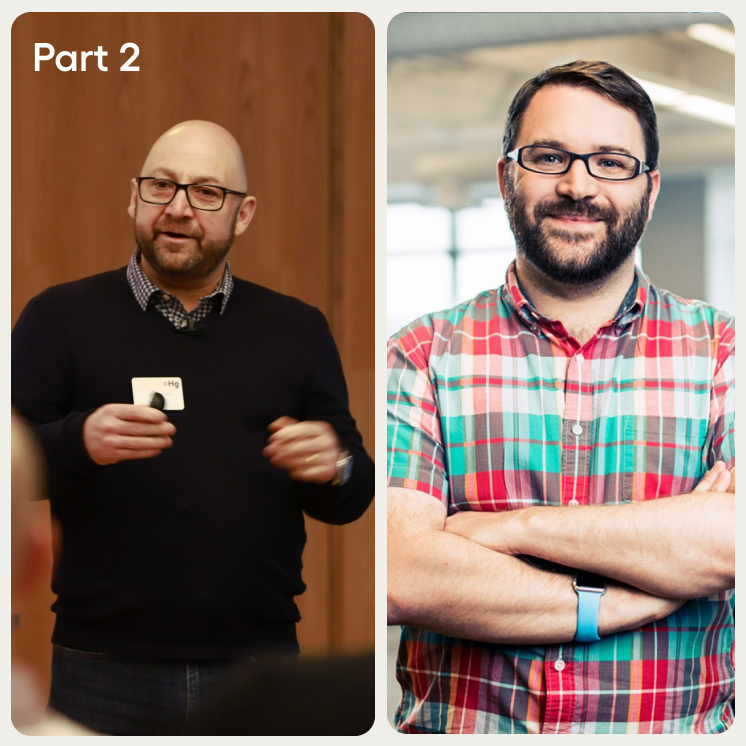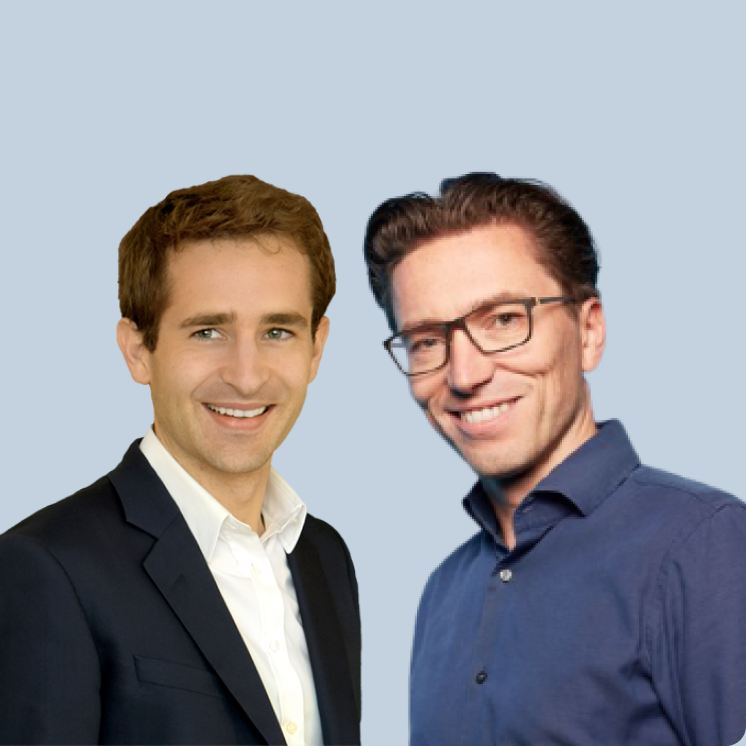Orbit Podcast
Orbit 20
To be of Value
How do you talk about value in an inflationary environment? A new challenge for many who work within the shifting boundaries of sales, marketing and pricing. In this episode of the Orbit podcast, Mark Fulford, Head of Hg's Portfolio Growth team, speaks to Mark Billige, CEO of Simon-Kucher.
Listen on:
Episode Transcript
Mark Billige
I like price, price is a really binary, simple concept. It’s got a number in it. It’s quantifiable. It’s also very easy to compare a price. Value is the opposite, right? Value is very intangible, very hard to quantify, and importantly, very hard to compare.
Mark Fulford
Welcome to Orbit, the Hg podcast series where we speak to leaders and innovators from across the software and tech ecosystem to discuss the key trends that change how we all do business. I’m Mark Fulford, head of Hg’s Portfolio Growth team. Today, I have the pleasure to welcome Mark Billige, CEO of Simon-Kucher. A consulting firm who helped their clients grow their revenues and profits by optimising their strategy, marketing pricing and sales. Hello, Mark. Thanks for joining me.
Mark Billige
Hi, Mark. Great to be here. Thank you very much.
Mark Fulford
So at Hg, we think very carefully about growth and we have a growth framework, which really looks at the key drivers of growth for businesses. Covering new logo acquisition, customer expansion, retention renewals. But one of the most important ones is obviously pricing and value proposition, and hence, us, discussing today because we think is a really important topic. I think even more so in today’s world where inflation is raising it’s ugly head. So I guess it’d be really interesting just to start the conversation to ask you about how you thinking about inflation. How it’s impacting certainly, software and tech firms today in the marketplace.
Mark Billige
Yeah. You’re right. I mean, you can have all the best pricing plans in the world, but now all of a sudden, they look very, very different in a world with 10% plus inflation. So I think software is quite interesting as well because here, we talk about mainly, I think, labor inflation and cost inflation on that side and whatever happens, that never goes back again. So that’s here to stay now. So that’s here to stay now, that’s ratcheted up. And I have to say my biggest insight at the moment working with various clients is most a massively underprepared.
And I think, in the past, and software in particulars, it’s always dealt with that relatively well. A lot of that have been dealt with through contracts and inflaters in contracts, but they were always around an RPI level 1%, 2%. Now we’re dealing with double digit inflation. And let’s be honest, most managers and leaders of companies haven’t probably dealt with that in their entire career span because we have to go back 15-20 years before we had that kind of inflation
Mark Fulford
I like that whole concept of how are we delivering value to our customers and making that part of the conversation. And I think from what I’ve seen, the discussion around value is often… we’ve lost a lot of that muscle memory around. Suddenly, it’s about justifying value and talking about the value to companies. How do you guys go about thinking about helping equip people to discuss value and talk about value when you’re working with your clients?
Mark Billige
And you’re right because value is unlike price. Price is a really binary, simple concept. It’s got a number and it’s quantifiable, but it’s also very easy to compare a price. Value is the opposite, right? Value is very intangible, very hard to quantify and importantly, very hard to compare between alternatives. And so, of course, that whole concept of pricing power relies, as you said, on some kind of value power, which is to say that I create some value for a customer.
So first observation is: most companies create a lot more value than they think. They’re very bad, they’re often quite humble, I think, and too introspective on that that they’re too quick to worry about value delivery. And because I think you focus on the bad things you hear and you forget the really good things you hear.
You focus on the churn number. You forget that and 90x% of the base renew every year and are super happy. So I think the first thing is that a bit of confidence to think about value and then to talk about it. And particularly, in an inflation environment, it’s a training moment, particularly for a sales force to have a very different kind of conversation, to really talk about value delivered.
And to actually, I think, lean into the pricing conversation to say, “Listen, we charge this price because we deliver great value. And by the way, here is how we are helping your business and here’s what value means.” And it’s not just a feature thing. It’s not just a core product thing, it’s a whole wrapper thing, which is around service. It’s around support. It’s around maintenance and operations. It’s around remembering when we got you back up and running within two hours when it went over like three years ago or so. And it’s about having those conversations in a much more confident way. And actually, a lot of sales people have maybe got a bit transactional probably in the past. They didn’t need to necessarily do that in a market where you didn’t have this extreme pressure on price.
Mark Fulford
Yeah. And I think, I mean, Hg’s modus operandi is obviously to invest in businesses that are often providing services and software that are critical to companies and I think we forget that sometimes that software is a great deflationary weapon, right? That they can actually bring down cost. It can fight against the rising cost that companies are facing. Do you see a movement in particularly SaaS based businesses? Do you see a movement of more companies now all getting onto that kind of software as a service and providing that mission critical element, or do you feel that there are still some lagging in the industry in terms of product offerings in the way that people go to market? What your sense of that SaaS surge if you like in the market.
Mark Billige
So, I mean, I think that this SaaS surge has been on for a while, right? It’s the neverending surge. Of course, and I think it depends a little bit on the nature of the problem you’re trying to solve with the software, and who you’re trying to sell that to. And certainly, I have some clients who… they still have a customer base because for instance, maybe they’re selling into government or they’re selling something which the client still is very untrustworthy to have that sat in a public, or sorry, sat in a private cloud. They still worry a little bit about data security and things like that. So there, of course, to be certain sub segments, I would say where cloud adoption is slower but I think more broadly than that, of course, this move to SaaS has been at a surge that never stopped.
And I think your point about software as a deflationary force is a really interesting one. And yes, software is deflationary insofar as it drives efficiency. It potentially takes some cost out. To your first question, how do I talk about value in an inflation environment? Well, there’s one angle which is to say, listen, we charge a bit more, but we are taking cost out on the other side. So it’s about having a conversation about ROI rather than price, which again, takes some thinking about, and isn’t necessarily every sales person’s first instinct.
And so, the move to SaaS, I think has been well documented, is going on everywhere. Does that change the inflationary discussion? Not so much. I think you’ve still got to have a conversation about more money maybe for the same product. But I think it does allow you to also play some tunes to have a slightly different conversation, which is about rather than a more for the same, also a more for more conversation, which is about easier to release new features, easier to take you further up the feature stack. And I think that’s also another important angle in here is how we deal with inflation, but actually just good, good pricing, good cross-sell, good upsell in a SaaS world is a much more dynamic conversation in selling you a piece of on-premise kit, perpetual license coming back five years later to see how it goes.
Mark Fulford
Yeah. That makes sense. What about some of the newer trends? We hear a lot about usage-based pricing, consumption-based pricing. Is that a trend that you’re seeing growing, expanding? If so, what are the different dimensions for that versus some of the older world?
Mark Billige
So, definitely, the answer is yes. Again, I come back to the word you use and it’s such important: value. Which if you think about it, the perfect pricing model is a pricing model which gets you very, very close to your value delivery model. And here, I really talk about the price model, not the price level. So inflation’s more of a price level conversation. It’s gone from 100 to 110. Price model is different. It’s a how I charge, not what I charge you. And there, the closer we are to the value delivery mechanism tends to be the better. And most software you get value by using it, not by owning it. So we see that a lot and that’s always been a trend that I’ve tried to work with my clients on, which is trying to think harder about what is the true source of value and how could we link our pricing closer to the delivery of value.
So that could be simplistically usage. The more you use, the more you pay. It could be a bit more nuance than that in terms of different kinds of usage, different kinds of users and different kinds of usage. And then you can get in, I think, into some quite interesting… you can play some quite interesting tunes in there. Particularly, I would say, in a world where you do have some volatility, the more you can be closer to usage, the better it says.
Listen, if you use the software less, you pay us less. This is a massive de-risker. And of course, in a world where people are worried, they are concerned about overall budget that I think is a very strong message to say, “Listen, you pay when you use.” And I would say also, if we can tie pricing closer to usage and therefore, de-risk the commercial conversation. It’s almost like an automatic inflater in that sense that when usage starts to go up then, and so does price as well. So yes, we see it a lot. We push it more and more. But still, I think, a lot of businesses still struggle a little bit with that mindset shift because… and the comment I often back is, “but that’s a lot more complex”.
Mark Fulford
Yeah. On that topic around who’s accountable for the… I guess, the consciousness of an organisation around pricing, where do you think the responsibility sits? We’ve had a lot of discussion within our Hg companies around. Should there be a pricing function? Does it sit with the CFO? What’s your sense of… where’s the battleground?
Mark Billige
Where does pricing sit? There’s two things, right? Who’s making pricing decisions and who actually owns the decision. And typically, I see pricing is made almost everywhere, but owned nowhere. Which is unlike other things, cost and things. The cost side of the business, the volume side of the business are often pretty well mapped out. The pricing side is much looser. So it normally sits in one of three places. So you find it in finance because it’s somehow… there’s costs and prices. They should somehow be connected together. Of course, you quite often find it in marketing because of the word value you talked about, and product and feature.
Sometimes you find it in sales. And let’s be honest, many, many companies, and here I talk B2B, many, many companies effectively outsourced their pricing complexity to a sales organisation. Said, listen, we don’t know exactly what every customer should pay so we allow you to have a conversation with them and work it out for us. And we assume you are wonderful at pricing and of course, not everyone is good.
So it normally sits in one of those three places. Typically, my favorite of the three would be in the marketing function rather than the finance of the sales function because I think there are biases. I talked about the bias in sales. We know about that. The bias in sales will always be potentially quite rightly customer is king, make customer happy. Therefore, that makes it very, very difficult to really guard your own pricing integrity.
In finance, again, I worry that finance comes from a world of cost. That’s not a problem with finance. It is their job. But again, I wouldn’t say cost is the perfect basis to have a conversation about price. The value one is much better. So I think marketing tends to be a better place. It’s got that neutrality from those two functions.
The other one, sometimes, you find it in its own function more and more now. I encounter companies who have a Chief Pricing Officer or a Director of Pricing, Head of Pricing. Sometimes it’s a subset of a sales, sorry, a strategy organization, but definitely long-term trend, more and more people with the word pricing and their job title. 10 years ago, I’d walk into any company software or other, and I would ask who is responsible for pricing and everyone would scratch their heads a bit.
So who has the word pricing on their business card? And the answer is nobody. That’s changed, definitely. And I see that more and more, but still it doesn’t always have the seat at the big table that the other functions do, which I find interesting given… as you said at the top, the importance of this lever.
Mark Fulford
It’s huge.
Mark Billige
Particularly in businesses and software businesses, low marginal cost where you can’t take so much cost out. Your growth leader has to be on the pricing side. So it probably needs a bit more attention at the senior table, I would say.
Mark Fulford
Makes sense. Again, a related topic. What’s your sense of how well pricing is tracked within businesses in terms of those kind of key metrics? I mean, again, I see a vast variety of approaching this. Some companies very, very good understanding in a price distribution, understanding discounting levels, and yet, others don’t even look at it. Where do you sit on that spectrum of what’s important to a board. If you’re a CEO, what should a CEO be thinking about or tracking?
Mark Billige
You would hope there is some common price in KPIs, somewhere in the dashboard. As you say, quite often. Definitely there’s a real variance in this. Whereas most CEO packs, most board packs, you’ll find the same things, almost every pack, whatever company you walk into. Pricing has definitely a lot more variability. Potentially, because it’s just simply hard to measure. Again, the cost of things, not so complicated. The price of things, I mean, what is a price? Is it a rate card price? Is it a net price? Is it an net-net price? Is it the discount, which is more important? The price, is it the customer lifetime value? Is it the renewal rate?
There’s so many nuances to that, which I think overwhelms people, but the things I think you want to start to know about straight away is I would always be interested, not so much in just a raw discount level, but in a discount level at a segment level, which is for certain product suites, for certain customer segments, how are we discounting on average and how is the variability around that discount?
Because rate cards are all very well. But we know that the rate card is a starting point. And actually, the net price then, and that discount of rate card, I think is quite interesting and shows you much more about… I think the capability of a sales team as well to have that value-based conversation. Obviously, just tracking an average price tends not to really help anybody.
I’ve often had conversations where… to shortcut, I guess something like this, Mark, which is… “we have very little pricing power because there is a market price for what we sell”. I’m like, “Well, that’s already interesting.” And then when we take that apart and we say, “So there’s a market price.” That means when your teams sell the product, there must be a very, very tight spread on prices. And there’s a sort of a general… there must be.
And actually, when we look at the data, you find never the case. There’s huge variability. I think people can miss that on prices, which is they look at the average and feel quite comfortable, but it’s finding that dispersion around the average, which is why it’s a more complicated thing.
And don’t get me wrong. I am the first person to say unlike many things in business, pricing variance is good, because by definition, customers are varied and they extract it different amount of value from the same product. But it needs to be organised and structured variance. And too often, I would say the bigger determinant is the salesperson or some other factor that has led to bad variances. And that’s just really hard to track to be honest.
Mark Fulford
Yes. It’s interesting point because I think one of the aspects I see is that variability in terms of how frontline people like sales and, to some degree marketing, are enabled to have these conversations. I guess, in your work, you must reach into that execution level around how people equipped. What’s your sense of where the industry, especially, in tech and software in equipping frontline staff? Do you think it could be better? Do you think it’s getting better? I mean, I sensed, again, a large degree of variability about who’s provided one. But you point around, who’s having the discount discussion? Who’s rolling over? What’s your sense of that enablement aspect?
Mark Billige
Yeah. There’s definitely a sort of irony working in the software industry whereas a lot of software companies obviously, have software in the DNA, but they don’t use software for pricing for some reason. They all lead that up to Excel and other bits-
Mark Fulford
Couple of shoes as they say.
Mark Billige
Always this right. And I’m actually often have quite weak. You probably find that as well. I mean, you look at so many businesses in this space. Actually, when it comes to their own systems, there are a lot of legacy patchwork and aren’t necessarily so strong. So enablement of pricing, I think comes in a couple of areas. So there’s the carrot and the stick side. So on the stick side, there’s this, “How do I control prices and how do I control discounting in particular in sales behavior?” For that, you do need a little bit of a system. You need a little bit of data and a little bit of transparency and you need some workflow controlling system. That’s not too complicated in all honesty.
To have the system, it’s the intelligence in that says, “Okay, Mark, you have a 20% discount threshold and you want 25, you want 30.” And someone has to sit around and say, “Shall we do it? Yes or no?” That’s still a commercial decision. And without some different comparatives such as, “Well, what is the discount we offer on average to customers like that buying a similar suite of products.” That would be a more interesting data point than just knowing you’ve crossed a discount threshold. So, you do need a little bit more to enable pricing. You need a little bit more data, a little bit more context, I think. These hard rules work less well. So you need some controls. And then the other things that enables better pricing is the incentive side.
And that’s somewhere where, again, people, I don’t think put enough thought into. And particularly here now, when we talk about software, data-as-a-service businesses where the marginal cost is so low. I see time and again, that sales people, they do have this sense, which is… listen, I’m saying something with effectively a variable cost are close to zero. So any money is good money. It’s pure contribution so why limit what I’m doing?
So there, to think that through differently, then to start saying… well, listen, yes. And of course, you will always have a drive for revenue and that’s good. And in a business like ours, we need revenue throughput from sales. But there’s also a quality of revenue dimension that we also should try and incentivize a bit as well.
So thinking through, for instance, I talked about your average discount level versus… say a peer group of other customers that are similar, other products that are similar. If you are in the top 20% of that peer group, maybe there’s something in that. Maybe there is a kicker tied to discount of rate multiplied through the revenue you sell. Just so that people and particularly sales have that bit more focus on, “Yeah, I’m selling, I need revenue, but I need a quality revenue because it’s very, very tempting to lose a lot of discipline in pricing in a software environment.”
Mark Fulford
Yeah. No, I agree. It’s something we started to do more recently is actually like a contribution margin across the salesforce and actually put that on the additive contribution margin on a curve. And you can really see the difference between high performance sellers. So not only meeting their bookings targets, but meeting their kind of EBITDA and profit margins. And I think you’re right around thinking about that in some way and around the incentive and compensation to get people thinking about it, because what you don’t want is… as you say, people achieving bookings at a negligible rate in terms of margin contribution. And I think that’s a really important aspect to track and we’ve been seeing some really interesting outputs from that.
Mark Billige
And even worse than that, which is you have… maybe a cohort, the sales team who actually on traditional measures of overall bookings probably feel they’re somehow in the bottom half of the table probably feel overlooked, probably feel… they aren’t the superstars that get all the glory, but actually, they could well have far higher contribution in absolute terms than some of these sort of the superstar sales team who have these very high booking numbers. And the worry there is eventually, they probably leave the organization. And they leave the sales team because they’re having harder conversations, but don’t understand why other people are getting the reward. So I think it’s really important to track that, to look at that and to put some transparency on that. To give some guidance.
Mark Fulford
Yeah. So listen, Mark. This is a topic I could discuss all day with you. So it’s a fascinating, fascinating world, but I really appreciate your insight. And thanks so much for joining us today.
Mark Billige
Well, thank you for having here really, really enjoyed it. Thanks, Mark.
Orbit episodes
Orbit Podcast
The 3 speed problem: Oji Udezue on CPO leadership in the age of unlimited engineering
Episode detailsOrbit Podcast
Fevered determination: Building Zalos from zero to enterprise in 5 weeks
Episode detailsOrbit Podcast
Trust, velocity, and building the Answer Engine: Dmitry Shevelenko of Perplexity speaks to Farouk Hussein
Episode detailsOrbit Podcast
The long road to the last mile: Nic Humphries and Matthew Brockman reflect on 25 years of Hg
Episode detailsOrbit Podcast
AI, Control Points, and the Next Wave of Vertical SaaS with Tidemark Capital founder, Dave Yuan
Episode detailsOrbit Podcast
A glimpse of the next generation: Zoe Zhao and Annalise Dragic of Azlin Software
Episode detailsOrbit Podcast
The business case for AI: Brent Hayward of Salesforce, David Carmona of Microsoft & Nagraj Kashyap of Touring Capital
Episode detailsOrbit Podcast
Mastering the billion-dollar software playbook: Joe Lonsdale of 8VC & Eric Poirier of Addepar
Episode detailsOrbit Podcast









